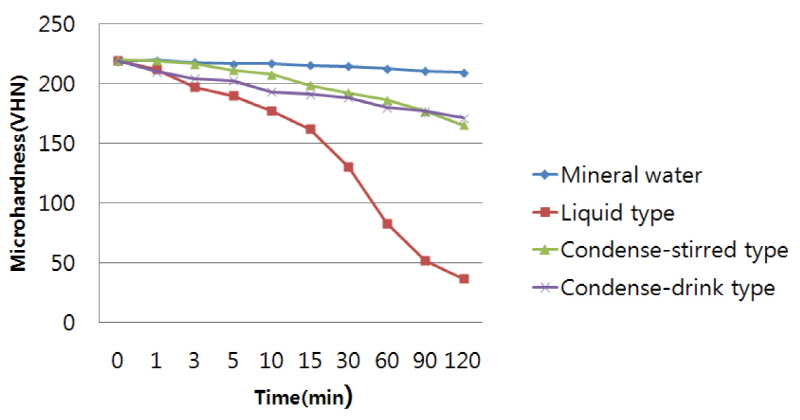Abstract
Objectives: The aim of this study was to evaluate the potential of dental erosion by three different types of commercial fermented milk on the enamel surface of bovine teeth. Methods: Forty bovine teeth (four groups of 10) were immersed in fermented milk (experimental groups: liquid type, condense-stirred type and condense-drink type) or mineral water (control group) for 1, 3, 5, 10, 15, 30, 60, 90 and 120 minutes. Enamel surface microhardness was measured before and after treatment with a microhardness tester, and Scanning Electron Microscope (SEM) was used to assess the enamel surface morphology. Results: Changes in enamel surface microhardness (before-after treatment; ∆VHN) were significantly different among the four groups (p<0.05). ∆VHN was highest in the liquid type group, followed by the condense-stirred type, condense-drink type, and control groups. The ∆VHNs of three types of fermented milk groups were higher than that of the control group (p<0.05). The liquid type group showed higher ∆VHN than the other two types of condense fermented milk groups (p<0.05). However, there was no significant difference in ∆VHN between the two types of condense fermented milk (p>0.05). The results of SEM observation have shown the most severe surface damage in bovine teeth immersed in the liquid type of fermented milk. Conclusions: In this study, it appears that liquid type fermented milk causes greater development of dental erosion. The physical properties and pH of fermented milk types must be considered for prevention of dental erosion associated with ingestion of fermented milk.
Figures & Tables

Changes in enamel surface microhardness (VHN) over exposure time to the experiment materials


